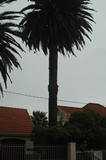PHOWN summaries and recordsVirtual Museum View records in Virtual Museum formatCoverage map for all species Species totals, Nest stats per species and Observer totals Species summary , or General query Observer records, or View VM record Photo of the week, or PHOWN repeats, or PHOWN priorities |
PHOWN record summary
|
Enter new vm record to see a different record and hit 'Go'.
|
Species allocated by Coordinator: Record details entered by participant: (see all records here for this participant) Google map for this record (zoom in and switch to satellite view)
Best: Interesting habitat of Southern Masked Weaver
Photos uploaded by observer


Large photos
803, Southern Masked Weaver Ploceus velatus (see species summary here)Record status ACCEPTED Vm 1104 [on-line data upload (2011-08-30): 8493] Species Southern Masked Weaver Observer(s) van der Westhuizen, Johan Country, town, locus South Africa, Western Cape, Bitterfontein ,
3018CDLocality along the R358 road from Bitterfontein to Kliprand and Pofadder Latitude, longitude -30.9539666667, 18.3011833333 [0 m accuracy] Date 2011/8/16 Notes In total there were four nests and the Weavers were going in and out of the nests.
What was interesting of this sighting was the fact that the surrounding veld consits of very short Succulent Karoo scrubveld with no tall scrubs or trees. The only taller scrubs were the Kriedoring (Lycium spp.) along the small waterway running through the culvert underneath the road where they build their nests. During my visit there was a waterpool because of rain four days before the visit. This shows that the Weavers are able to build nests in smaller shrubs even in drier areas where there are no trees and reeds. Nest count 4 Nest site tree
To see this map with all other PHOWN records, click here. Note that the map on this page will load very slowly and probably will only work if you use Chrome as a browser.
History of repeat colony counts
Note: repeats from the same day are not shown.vm Species code Date Nests Notes 1104 803 16/8/2011 4 In total there were four nests and the Weavers were going in and out of the nests.
What was interesting of this sighting was the fact that the surrounding veld consits of very short Succulent Karoo scrubveld with no tall scrubs or trees. The only taller scrubs were the Kriedoring (Lycium spp.) along the small waterway running through the culvert underneath the road where they build their nests. During my visit there was a waterpool because of rain four days before the visit. This shows that the Weavers are able to build nests in smaller shrubs even in drier areas where there are no trees and reeds. 
Vm 1104










